The flag of Israel serves as a compelling visual emblem that captures the essence of this Middle Eastern nation. Adopted in 1948, the flag blends tradition, symbolism, and national identity.
Through its unique design elements, the flag narrates a story that reflects Israel’s geopolitical significance, religious roots, and the collective aspirations of its people.
Israel Flag
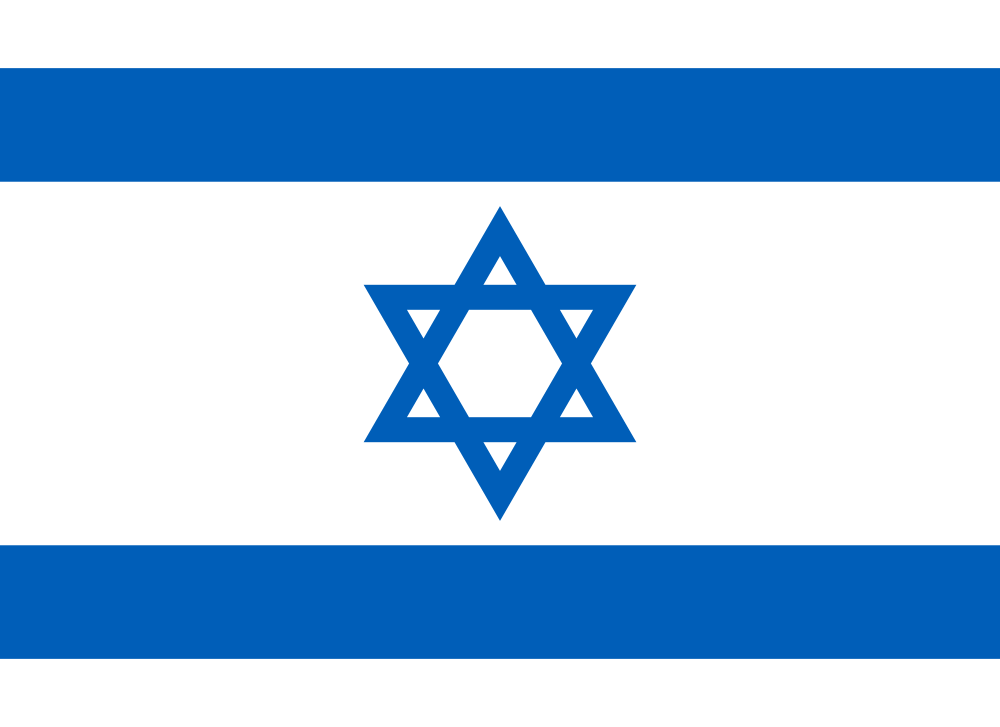
The flag of Israel consists of three horizontal stripes: a blue stripe at the top, a white line in the middle, and another blue stripe at the bottom. In the center of the white stripe is a blue Star of David. This layout was officially adopted on October 28, 1948, shortly after establishing the State of Israel.
The design draws inspiration from the Jewish prayer shawl, known as the “tallit,” which is traditionally white with blue stripes. The Star of David is a widely recognized Judaism and Jewish heritage symbol. Overall, the flag serves as a national symbol and reflects Israel’s deep-rooted connection to the Jewish faith and history.
Israel Flag: Color Palette
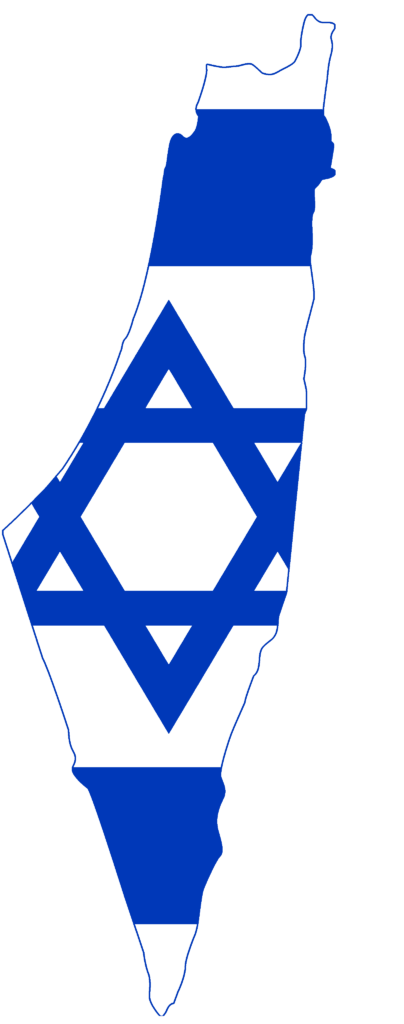
Israel Flag Emoji: 🇮🇱
The color palette of Israel’s flag is simple yet meaningful, comprising just two colors: blue and white. This restrained choice of hues gives a strong visual impact while imbuing the flag with cultural and historical significance layers. The following section will delve deeper into the specific meanings associated with each color.
Meaning of Each Color
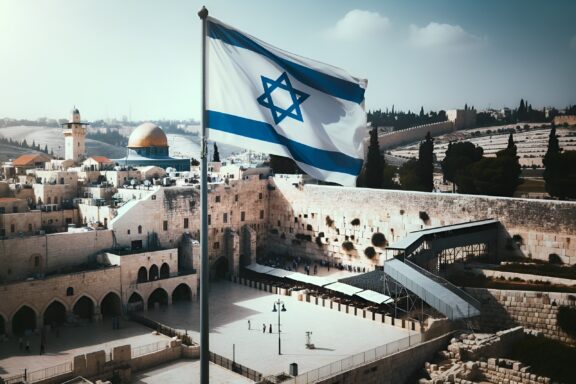
Blue
The blue stripes at the top and bottom symbolize the standard Jewish prayer shawl, known as the Tallit, which is traditionally white with blue stripes.
Additionally, blue is associated with divinity, spirituality in Judaic traditions, the sky, and hope for serenity, reflecting a broader perspective beyond the religious context.
White
The white field between the blue stripes embodies purity, innocence, and peace among all people in Israel. It also symbolizes God’s glory and divine benevolence, reflecting the virtues esteemed in various cultures and faiths, including Judaism.
Star of David
The Star of David is positioned in the center of the white field, a hexagram symbolizing Judaism and representing the Jewish people and their connection to the land of Israel. This symbol serves as a bridge tying the modern state to ancient practices and values.
Israel Coat of Arms
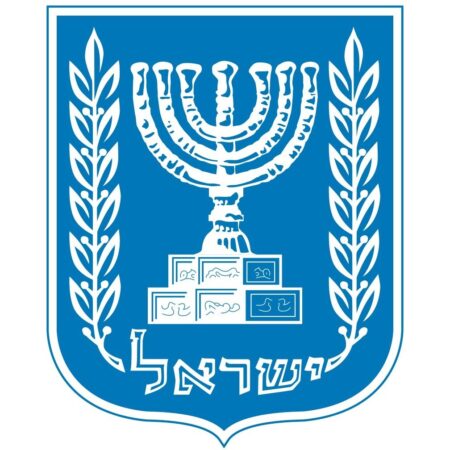
Israel’s coat of arms represents the nation’s rich history, diverse culture, and hopeful vision for the future. The emblem encapsulates key elements that reflect the nation’s ancient heritage and contemporary narrative.
It blends traditional symbols with modern meanings, showcasing the multifaceted nature of Israel. The carefully chosen symbols on the emblem provide a visual narrative that connects the past with the present, portraying a story of resilience, cultural continuity, and a desire for peaceful coexistence.
Israel extends an invitation for understanding and engagement through this emblem, embodying its aspirations amidst a complex regional backdrop. This emblem is more than mere decoration; it is a visual story that speaks to the heart of what Israel represents to its citizens and the world.
Historical Evolution and the Meaning Behind Changes
Israel’s flag was officially adopted shortly after the declaration of the State of Israel. The design, featuring a central Star of David flanked by two horizontal stripes, has remained unchanged since its adoption.
While there have been debates and proposals over the years about modifying the flag to reflect the country’s diversity or changing circumstances, none have led to official alterations.
This stability in design can be seen as an expression of Israel’s enduring core identity, especially in the context of ongoing geopolitical challenges. The flag’s consistency also underlines the nation’s foundational principles and the collective history of its people.
Overall, the unchanged nature of the flag serves as a symbol of continuity for Israel, reflecting the country’s connection to its roots while navigating its modern-day realities.
Overall Symbolic Meaning of the Flag

The flag of Israel effectively merges ancient heritage with modern statehood, offering a rich tapestry of symbolism. The central Star of David and horizontal stripes unite to emphasize a core Jewish identity while framing a broader narrative of unity and resilience.
This composite design resonates deeply with its citizens and holds significant meaning in the international arena. The flag is a multi-layered emblem, capturing Israel’s unique complexities and aspiration for peace.
Similar Flags to the flag of Israel
While each flag serves as a unique emblem of its nation, it’s intriguing to note that the flag of Israel shares certain design elements with the flags of other countries.
Here are three flags that resemble Israel’s, along with an exploration of these similarities.
El Salvador
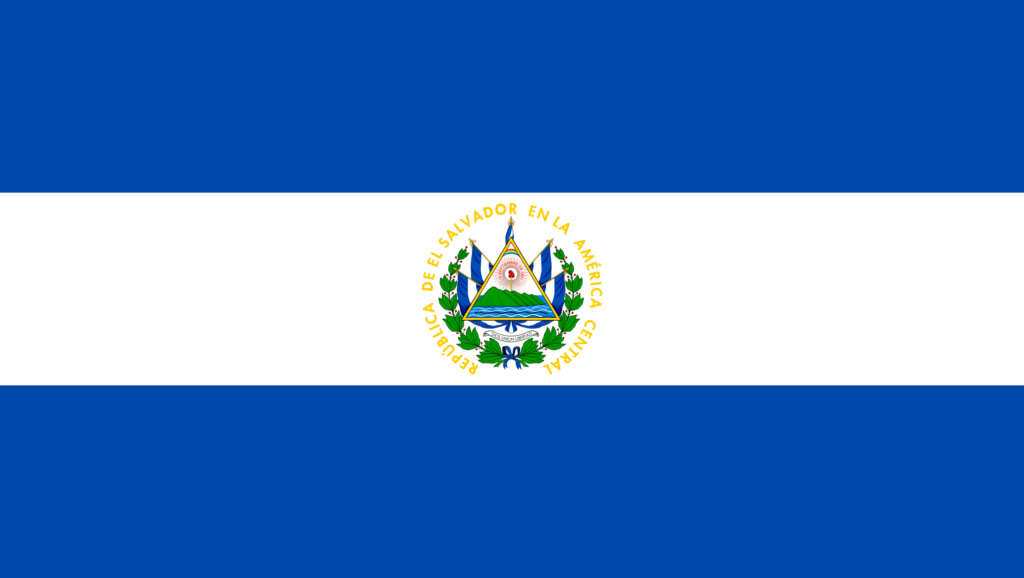
The flag of El Salvador features horizontal stripes in blue and white. The stripes’ arrangement echoes that of Israel’s flag. However, the symbolism behind the colors diverges.
In El Salvador, the blue stripes signify the Pacific Ocean and Caribbean Sea, essential to the country’s geography and history. On the other hand, Israel’s lines have specific Jewish connotations inspired by the conventional Jewish prayer shawl known as the Tallit.
Greece
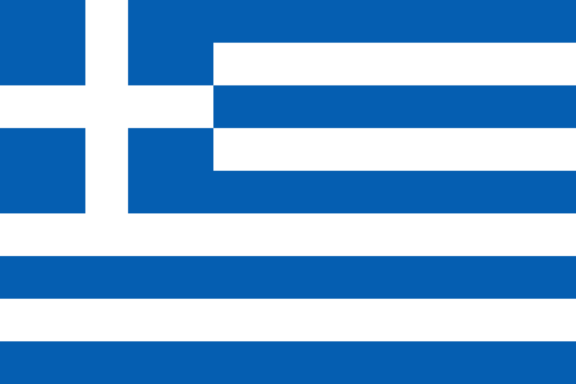
Greece’s flag also features blue and white stripes like Israel’s flag. However, these stripes alternate vertically rather than horizontally in the Greek flag.
The blue in Greece’s flag represents the sea, a crucial aspect of Greek identity, while the white stands for purity and freedom. Despite the similarities in color, there is no direct connection between the two flags in terms of history or symbolism.
Nicaragua
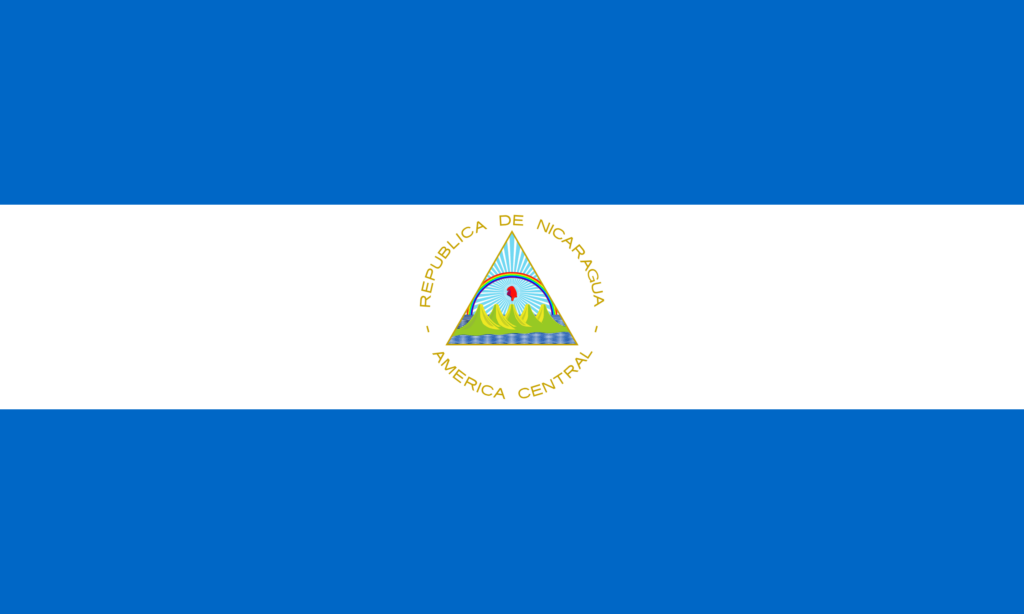
Nicaragua’s flag has a horizontal blue stripe flanked by two white stripes, similar to Israel’s flag. The blue stripe in the Nicaraguan flag symbolizes the Atlantic and Pacific Oceans, integral to the country’s geography.
The symbolism of the stripes in Israel’s flag is more tied to Jewish heritage, specifically the Tallit.
Conclusion
Israel’s flag is more than just a piece of fabric; it’s a symbol rich with meaning, reflecting the country’s unique history, religious significance, and cultural values. While it resembles other flags, it stands out in the global tapestry of national emblems.
For the people of Israel, the flag represents the state and symbolizes shared values and collective hopes, serving as a unifying element in a diverse society.